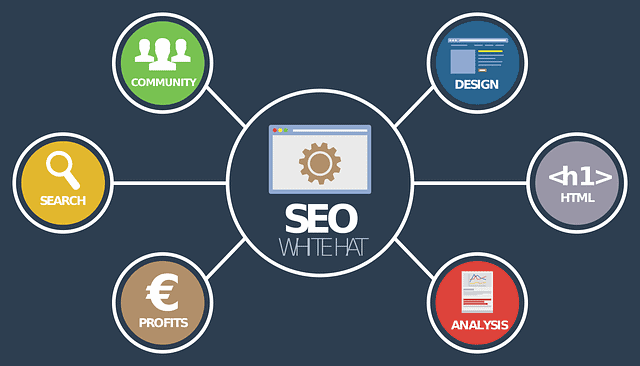-By: Bhavisha Changrani
The digital marketing landscape is constantly evolving, and one of the most significant shifts in recent years has been the rise of zero-click searches. This change is transforming how we think about search engine optimization (SEO) and challenging traditional strategies. This post will explain zero-click searches, their growing popularity, and how they are changing SEO strategies for marketers and companies.

What Are Zero-Click Searches?
A zero-click search refers to a search engine result where the user gets all the information they need directly from the search results page, without clicking through to a website. Essentially, the answer to the user’s query appears directly in the search engine interface. Common forms of zero-click searches include:
– Featured Snippets: These are brief, direct answers to a search query that appear at the top of the search results in a special box.
– Knowledge Panels: These panels appear on the right side of the search results and provide summary information about a topic, such as details about people, organizations, or places.
– Local Packs: These show location-based results, such as local businesses, with maps, reviews, and contact information directly on the SERP.
– People Also Ask (PAA): A box that contains related questions and answers, providing users with further relevant information without the need to click on a link.
– Image and Video Carousels: These show multimedia results directly in the SERP, often eliminating the need to visit a website for visual content.
Zero-click searches are becoming increasingly common due to advancements in how search engines understand and display content. But while they improve user experience, they also present challenges for digital marketers aiming to drive traffic to their websites.

Why Zero-Click Searches Are Becoming More Common
The increase in zero-click searches can be attributed to a number of things. At the heart of this shift is the push towards delivering faster, more accurate answers to users. The following are some explanations for the rise:
User Demand for Instant Information
Today’s users expect quick, concise answers. With the increasing use of mobile devices and voice assistants, many users prefer to get answers directly from search engines without having to click through to a website. For example, when asking about the weather, the latest news, or the capital of a country, users often don’t want to browse through multiple links—just a quick answer will suffice.
Advancements in Search Engine Technology
Search engines, particularly Google, have become much more sophisticated thanks to advances in natural language processing (NLP) and machine learning. These technologies allow search engines to better understand the intent behind queries and provide direct, relevant answers. Google’s algorithms can now extract information from a variety of sources and display it in a way that addresses the user’s need immediately.
The Rise of Voice Search
As voice search grows in popularity, particularly with the use of smart speakers like Amazon Echo and Google Home, there is an increasing demand for quick, verbal answers. Voice search queries tend to be shorter and more conversational, which makes zero-click answers ideal. Instead of requiring users to click through and visit a website, search engines can provide a direct spoken answer.
Mobile Search Optimization
More and more searches are being conducted on mobile devices, where screen real estate is limited. In these scenarios, providing an immediate answer in the search results—such as through a featured snippet or local pack—is an efficient way to meet users’ needs without requiring them to visit a website or scroll through lengthy search results.

Zero-Click Searches’ Effect on SEO
The rise of zero-click searches is having a profound effect on SEO strategies. Here are the key ways in which these searches are impacting the SEO landscape:
Less Click-Through Traffic to Websites
Perhaps the most obvious consequence of zero-click searches is the reduction in organic traffic to websites. Since users are getting their answers directly from the SERP, they may not need to visit a website. For example, if your website is the source of a featured snippet, users may see your answer but leave the page without clicking through.
However, this doesn’t necessarily mean that zero-click searches are bad for businesses. While fewer users might click through to a site, they may still become aware of a brand, product, or service. Featured snippets, knowledge panels, and other zero-click features can increase brand visibility, even if they don’t drive direct traffic.
Increased Competition for Prominent SERP Features
As more search queries trigger zero-click results, competition for prime SERP positions has intensified. Brands now not only need to focus on traditional organic rankings but also aim to secure spots in rich results, such as featured snippets, knowledge panels, and local packs. These positions are highly coveted because they can provide significant visibility.
To stand out in this competitive environment, websites must optimize their content to increase the chances of being featured in these zero-click areas. This might mean targeting question-based queries, providing clear, concise answers, and using structured data to enhance the visibility of your content.
Focus on Branding and Visibility
Even if users don’t click through to your website, appearing in zero-click search results can still help build brand recognition. A Knowledge Panel showing your business or product, or a Featured Snippet quoting your content, increases your brand’s exposure. It can also position your business as an authoritative voice on the subject matter, which can drive indirect engagement through brand recall.
Moreover, if your brand appears frequently in zero-click results, this can contribute to brand trust. Users who see your business consistently providing accurate and helpful information may come to view your brand as reliable and trustworthy.
The Importance of Structured Data
One of the most effective ways to increase the likelihood of appearing in zero-click results is by implementing structured data (or schema markup) on your website. Structured data helps search engines understand the context and meaning of your content, making it easier for them to feature your site in rich results.
For example, if you run an e-commerce website, using schema markup for product details—like pricing, availability, and ratings—can increase the likelihood that your products will appear in search results with enhanced features like product carousels or rich snippets.

A Shift in SEO Metrics
As zero-click searches reduce the focus on driving traffic to websites, marketers are shifting their focus toward other valuable metrics, such as brand awareness, engagement, and conversion rates. Rather than obsessing over increasing clicks, the goal is to ensure that your content and brand are visible when users search for relevant queries.
This means that businesses need to be more strategic about how they engage users. Whether it’s through user-centric content, optimizing for local SEO, or refining conversion funnels, the focus is on creating a better user experience and improving overall business results, not just increasing traffic.
How to Adapt Your SEO Strategy to Zero-Click Searches
Here are some ways to adjust your SEO strategy in light of the growing trend of zero-click searches:
– Optimize for Featured Snippets]
Aim to provide clear, concise answers to frequently asked questions and use structured formats like bullet points, numbered lists, or tables to make your content snippet-friendly.
– Implement Schema Markup
Use schema markup to help search engines understand the context of your content and improve your chances of appearing in rich results.
– Focus on Local SEO
Ensure that your business is listed and optimized on platforms like Google My Business to improve your chances of appearing in local packs and map results.
– Enhance Your Content’s Visual Appeal
Since image and video carousels are common zero-click features, consider including high-quality visual content on your website that could be pulled into search results.
– Monitor Brand Visibility
Track how often your brand appears in zero-click results and adjust your content strategy accordingly to maintain visibility.

Conclusion
Zero-click searches are reshaping the way users interact with search results, presenting new opportunities and challenges for SEO. While they may reduce the need for users to click through to websites, they also offer increased visibility and brand recognition for businesses that successfully optimize for these features. As zero-click results become more prevalent, marketers need to adapt by focusing not only on driving traffic but also on enhancing user engagement and improving overall brand visibility.
By embracing structured data, focusing on featured snippets, and refining their SEO strategies, businesses can continue to thrive in this changing landscape. Zero-click searches may be a disruption, but with the right approach, they can also be a powerful tool for growth.










